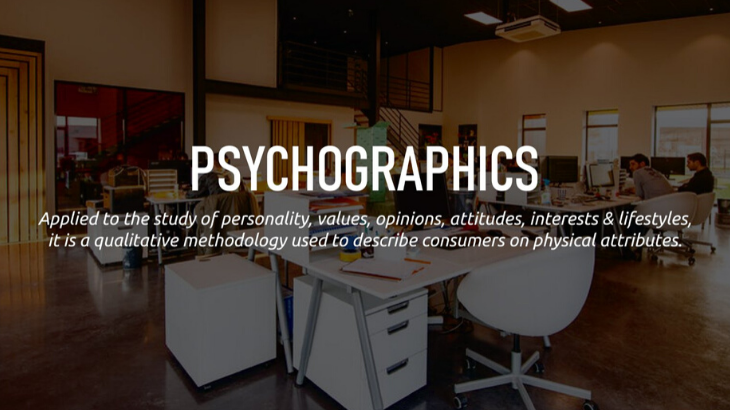One of the top design trends today, psychographics is changing the way workplaces are designed. It is doing away with the world of uncertainty and becoming a keystone in the decision making process. While demographics deals with gender, age, income, education, marital status, race etc., psychographics deals with the attitudes, values and opinions, daily habits, hobbies, beliefs, interests, purchasing patterns and lifestyle of a person.
Psychographics moves beyond demographics, to give real insights into what people want, their needs, motivations, connect. Thus, designers and builders are now looking at psychographics to assist in the designing process –to understand who they are designing for, their needs and wants; and customizing projects to suit their customers’ requirements. Psychographics allows real estate agents to know which features people wish to have in their offices, restaurants, community settings or even multifamily buildings For e.g. while looking at a new space, the focus at the first instance can be on quality and appearance, but if you look closely sustainability features have become imperative for some buyers (renewable and sourced locally).
Understanding psychographics is also becoming extremely important to craft marketing strategies, while maximizing ROI for the seller. Psychographic information is easy to find in this digital age and data is becoming a profitable tool in the decision making process. From planning to site selection to marketing, psychographics finds uses in various aspects of real estate. Retailers, restaurants and hospitals are using psychographic profiles for site selection. These profiles assist the commercial real estate agents to advice on new developments/leasing. In retail specifically, psychographics allows for optimization of products and placements based on preferences and reaching the targeted audience. Some real estate brokers are coupling psychographics with Geographic Interface System (GIS) to suggest advantageous location for retailers.
In workplace design, psychographics helps builders and developers better understand/decide what and where to build. While planning to build an office space it provides additional inputs about preferences of the employees. This helps create a workplace that attracts and retains talent and provides opportunities for creativity. Not only that, when the design resonates with one’s values, beliefs and opinions, a deeper connect with the company and the brand is fostered. In fact there have been studies conducted that state that employee creativity is paramount to organizational innovation, effectiveness and survival. Thus, use of psychographics can provide the added edge for organizational survival.
